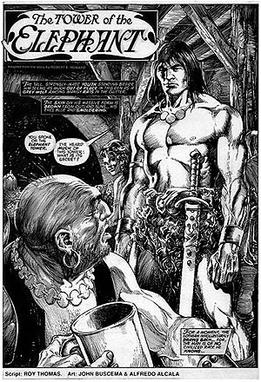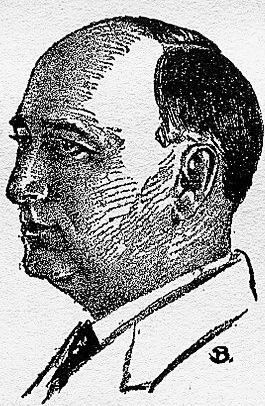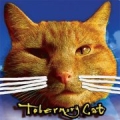
Hector Hugh Munro, popularly known by his pen name Saki and also frequently as H. H. Munro, was a British writer whose witty, mischievous and sometimes macabre stories satirize Edwardian society and culture. He is considered by English teachers and scholars a master of the short story and is often compared to O. Henry and Dorothy Parker. Influenced by Oscar Wilde, Lewis Carroll and Rudyard Kipling, Munro himself influenced A. A. Milne, Noël Coward and P. G. Wodehouse.

Alice Ann Munro was a Canadian short story writer who won the Nobel Prize in Literature in 2013. Her work tends to move forward and backward in time, with integrated short story cycles.

Tobermory is the capital of, and until 1973 the only burgh on, the Isle of Mull in the Scottish Inner Hebrides. It is located on the east coast of Mishnish, the most northerly part of the island, near the northern entrance of the Sound of Mull. The town was founded as a fishing port in 1788; its layout was based on the designs of Dumfriesshire engineer Thomas Telford. As of 2022 its population was 1,045. It is notable as the location for the 2002–05 children's programme Balamory by the BBC.

Wonder Stories was an early American science fiction magazine which was published under several titles from 1929 to 1955. It was founded by Hugo Gernsback in 1929 after he had lost control of his first science fiction magazine, Amazing Stories, when his media company Experimenter Publishing went bankrupt. Within a few months of the bankruptcy, Gernsback launched three new magazines: Air Wonder Stories, Science Wonder Stories, and Science Wonder Quarterly.

"The Tower of the Elephant" is one of the original short stories starring the fictional sword and sorcery hero Conan the Cimmerian, written by American author Robert E. Howard. Set in the fictional Hyborian Age, it concerns Conan infiltrating a perilous tower to steal a fabled gem from an evil sorcerer named Yara. Its unique insights into the Hyborian world and atypical science fiction elements have led the story to be considered a classic of Conan lore, and it is often cited by Howard scholars as one of his best tales.

David Henry Keller was an American writer who worked for pulp magazines in the mid-twentieth century, in the science fiction, fantasy, and horror genres. He was also a psychiatrist and physician to shell-shocked soldiers during World War I and World War II, and his experience treating mentally ill people is evident in some of his writing, which contains references to mental disorders. He initially wrote short stories as a hobby and published his first science fiction story in Amazing Stories in 1928. He continued to work as a psychiatrist while publishing over sixty short stories in science fiction and horror genres. Technically, his stories were not well-written, but focused on the emotional aspects of imaginative situations, which was unusual for stories at the time.
Debi Gliori is a Scottish writer and illustrator of children's books.
When William Came: A Story of London Under the Hohenzollerns is a novel written by the British author Saki and published in November 1913. It is set several years in what was then the future, after a war between Germany and Great Britain in which the former won.
Beasts and Super-Beasts is a collection of short stories, written by Saki and first published in 1914. The title parodies that of George Bernard Shaw's Man and Superman.

Fictional planets of the Solar System have been depicted since the 1700s—often but not always corresponding to hypothetical planets that have at one point or another been seriously proposed by real-world astronomers, though commonly persisting in fiction long after the underlying scientific theories have been refuted. Vulcan was a planet hypothesized to exist inside the orbit of Mercury between 1859 and 1915 to explain anomalies in Mercury's orbit until Einstein's theory of general relativity resolved the matter; it continued to appear in fiction as late as the 1960s. Counter-Earth—a planet diametrically opposite Earth in its orbit around the Sun—was originally proposed by the ancient Greek philosopher Philolaus in the fifth century BCE, and has appeared in fiction since at least the late 1800s. It is sometimes depicted as very similar to Earth and other times very different, often used as a vehicle for satire, and frequently inhabited by counterparts of the people of Earth.
Everett Franklin Bleiler was an American editor, bibliographer, and scholar of science fiction, detective fiction, and fantasy literature. In the late 1940s and early 1950s, he co-edited the first "year's best" series of science fiction anthologies, and his Checklist of Fantastic Literature has been called "the foundation of modern SF bibliography". Among his other scholarly works are two Hugo Award–nominated volumes concerning early science fiction—Science-Fiction: The Early Years and Science-Fiction: The Gernsback Years—and the massive Guide to Supernatural Fiction.

"The Dark Eidolon" is a sword and sorcery short story by American writer Clark Ashton Smith, forming part of his Zothique cycle of stories. It was first published in Weird Tales in 1935 and has been variously republished, notably in the anthology The Spell of Seven, edited by L. Sprague de Camp.

Arthur John Langguth was an American author, journalist and educator, born in Minneapolis, Minnesota. He was professor of the Annenberg School for Communications School of Journalism at the University of Southern California. Langguth was the author of several dark, satirical novels, a biography of the English short story master Saki, and lively histories of the Trail of Tears, the American Revolution, the War of 1812, Afro-Brazilian religion in Brazil and the United States, the Vietnam War, the political life of Julius Caesar and U.S. involvement with torture in Latin America. A graduate of Harvard College, Langguth was South East Asian correspondent and Saigon bureau chief for The New York Times during the Vietnam War, using the byline "Jack Langguth". He also wrote and reported for Look Magazine in Washington, DC and The Valley Times in Los Angeles, California. Langguth joined the journalism faculty at USC in 1976. He was awarded a Guggenheim Fellowship in 1976, and received the Freedom Forum Award, honoring the nation's top journalism educators, in 2001. He retired from active teaching at USC in 2003.

Dresden Zoo, or Zoo Dresden, is a zoo in the city of Dresden, Germany. It was opened in 1861, making it Germany's fourth oldest zoo. It was originally designed by Peter Joseph Lenné.

The Thrill Book was a U.S. pulp magazine published by Street & Smith in 1919. It was intended to carry "different" stories: this meant stories that were unusual or unclassifiable, which in practice often meant the stories were fantasy or science fiction. The first eight issues, edited by Harold Hersey, were a mixture of adventure and weird stories. Contributors included Greye La Spina, Charles Fulton Oursler, J. H. Coryell, and Seabury Quinn. Hersey was replaced by Ronald Oliphant with the July 1 issue, probably because Street & Smith were unhappy with his performance.

Tobermory Cat is the name of a celebrity ginger cat used as an "evolving, interactive artwork" by Scottish artist Angus Stewart.
The Chronicles of Clovis (1911) by Saki, the pseudonym of Hector Hugh Munro, is the author's third volume of short stories, 28 in number, the majority of which had earlier appeared in various newspapers and magazines. Witty, socially satirical, and sometimes chilling, they narrate the exploits of Clovis Sangrail, Bertie van Tahn and other privileged characters in Edwardian England. The collection is acknowledged to contain some of his best and most popular stories.













